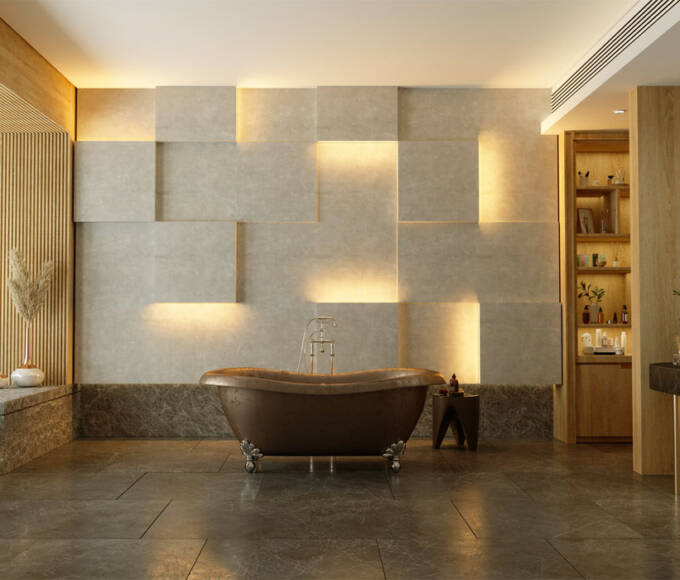Introduction:
Faux brick wall panels are a fantastic way to bring a traditional brick wall’s rustic charm and warmth into your home without the expense and labor of real masonry. They’re ideal for creating a feature wall in your living space, characterizing a room, and creating an industrial or farmhouse aesthetic.
Yet, the key to a successful project lies in the proper installation. In this comprehensive guide, we will walk you through the entire process of installing brick wall panels, ensuring that your project is stunning but also durable, and long-lasting.
Brick wall panels deliver the same rich, textured look as real bricks but without the weight and cost. Because they are lightweight and easy to cut and reposition, these panels offer much more flexibility for installation, especially for DIYers.
Whether you’re revamping your home’s interior or seeking a statement wall for your retail space, this step-by-step guide will help you achieve professional-looking results. Read on to learn more!
Step 1: Gather Your Tools and Materials
Before installing, ensure you have all the necessary tools and materials. This will save you time and frustration during the process. Here’s a basic list to get you started:
- Faux Brick Panels
- Wallpaper Adhesive or Paneling Adhesive
- Caulk Gun and Construction Adhesive
- Level and Measuring Tape
- Jigsaw or Circular Saw
- Polystyrene Foam Insulation
- Utility Knife
- Painter’s Tape and Masking Film
- Spackling and Sandpaper
- Safety Gear
Step 2: Prepare the Area
Preparation is key to a successful installation. Start by removing any existing wall coverings and ensuring the wall is clean, dry, and free from imperfections.
Use a stud finder to locate the wall studs, as these will be the primary attachment points for your panels. If necessary, mark the wall with a pencil to indicate the studs.
Next, protect the floor and adjacent surfaces with drop cloths or plastic sheeting. You’ll be working with adhesives and may generate dust during the cutting process, so it’s essential to keep your work area tidy.
Step 3: Plan Your Layout
Now, it’s time to plan how you’ll arrange your panels. Starting from the bottom corner of the wall where you’ll begin, use a level and a straight edge to draw plumb reference lines on the wall. These lines will guide the first row of panels and ensure they are installed straight and true.
Consider the most visually pleasing way to arrange the panels, whether you want to stagger the joints like real bricks or align them for a more seamless look. Use the level and reference lines to mark where any necessary cuts will be made at corners, for outlets, or at the top of the wall.
Step 4: Apply Adhesive
This step is where you will fix the panels onto the wall surface. Apply the adhesive according to the manufacturer’s instructions.
Generally, this will involve using a trowel to spread the adhesive on the back of the panel. Start at the bottom with the first panel and press it onto the wall, using your level to ensure it’s straight.
For a more secure bond, you may need to use construction adhesive in addition to the adhesive that comes with the panels, especially along the edges and corners. Apply the adhesive in a continuous serpentine bead or a square grid pattern across the back surface, about 1 inch from the edges.
Step 5: Install the Panels
Once the adhesive is applied, press the first panel into place, starting from the bottom and working your way up. Use the marks and guidelines you’ve set to ensure the panel fits. If the panels are tongue-and-groove, interlock the pieces for a seamless look.
For any necessary cuts, use a jigsaw or circular saw with a fine-tooth blade designed for this type of material. Mount the panel and use a level to draw your cut lines if cutting out for outlets. Safety is paramount, so always wear proper protective gear and make your cuts in a well-ventilated area.
Step 6: Secure the Panels
After installing each panel, use a level to double-check that they are straight and maintain the desired pattern. Secure the edges and corners with finishing nails driven into the wall studs, then cover these nails with spackling to conceal them.
If working with an uneven surface or unsure about the adhesive’s integrity, you may want to use more nails and adhesive to ensure the panels are firmly in place. Additionally, sealing the edges with caulk can help create a seamless appearance.
Step 7: Finish and Seal the Wall
Scrutinize your installation, ensuring that all panels are secure and that any gaps between panels or between the panels and the floor or ceiling are filled. Use a spackle to fill any nail holes or gaps and smooth the area once the spackling is dry.
If desired, paint the wall to match the color of the panels or to create a contrast. This step is optional but can add to the authenticity of the brick wall. Once the paint is dry, seal the wall with a clear, matte-finish polyurethane to protect the surface and make it easier to clean.
Step 8: Enjoy Your New Faux Brick Wall
With the panels installed and secured and the wall properly sealed and finished, your faux brick wall can now have a stylish and homey presence. Step back and admire your work.
When installed correctly, faux brick wall panels can transform a room and become a focal point of your home design. For brick options for your brick panel installation, visit https://www.brickmywalls.com/.
Exploring How to Install Brick Wall Panels
Remember, installing brick wall panels requires planning, patience, and attention to detail. By following a structured approach and ensuring each step is done right, you can achieve a professional-looking result that will endure for years.
Congratulations on completing your faux brick wall installation; it’s a testament to your commitment to creating a beautiful space that reflects your personal style and taste. Enjoy the cozy ambiance and the character this new addition brings to your home!
For more helpful tips, check out the rest of our site today!








